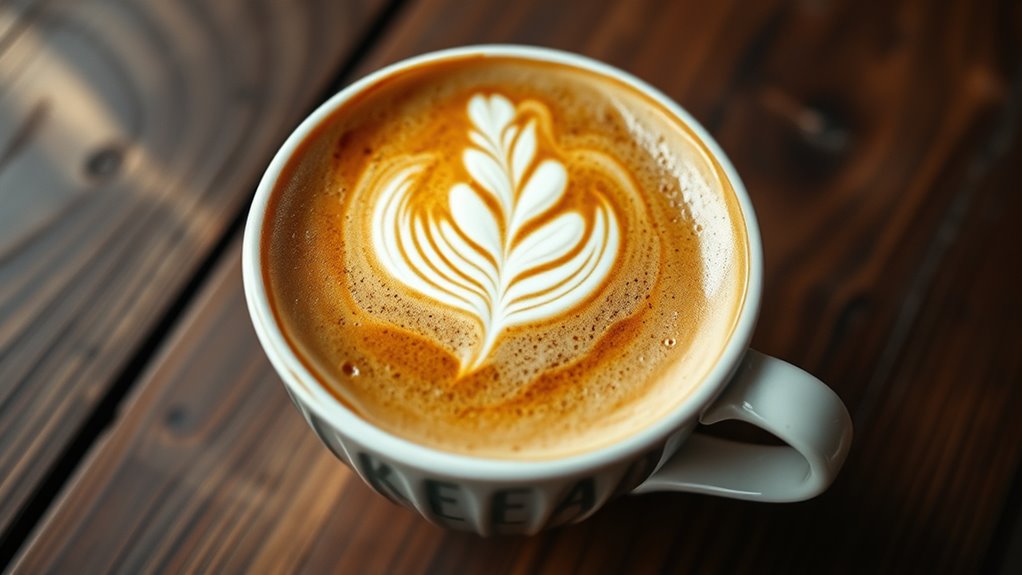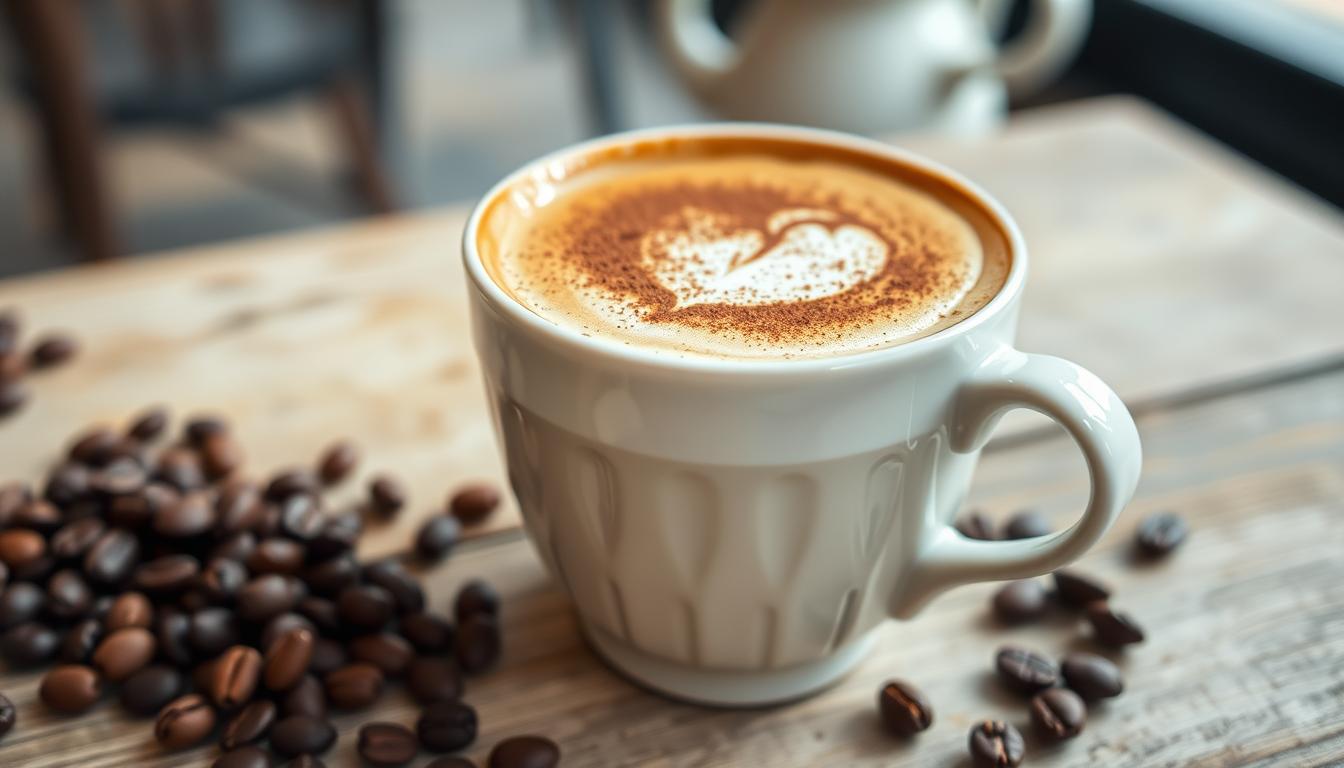The history of cappuccino begins with early 20th-century innovations in espresso machines, which transformed traditional coffee into rich, quick shots. Italian coffee houses refined the art, layering espresso with steamed milk and foam, giving the drink its iconic look and name, inspired by Capuchin friars’ robes. Post-World War II advancements made it popular worldwide. If you explore further, you’ll discover how this beloved beverage evolved through technological progress and cultural influence over time.
Key Takeaways
- The espresso machine’s invention in early 20th-century Italy revolutionized coffee brewing, leading to the development of cappuccino.
- Italian coffee houses in cities like Milan and Rome refined espresso techniques and created the layered cappuccino appearance.
- The name “cappuccino” originated in the 1930s, referencing the foam’s color resembling Capuchin friars’ robes.
- Post-World War II technological advancements made cappuccinos more accessible and popular across Europe and worldwide.
- Modern cappuccino evolved from earlier coffee styles, becoming a globally beloved beverage with cultural and technological influences.

Fast forward to the early 20th century, when Italy’s coffee scene began to evolve with the invention of the espresso machine. This technological innovation allowed baristas to brew concentrated coffee shots quickly and efficiently, transforming traditional Ottoman coffee preparation methods into a new espresso-based style. The Italians started experimenting with this potent, rich coffee, setting the foundation for modern coffee culture. The development of natural materials and specialized equipment like the espresso machine played a crucial role in refining brewing techniques and enhancing flavor profiles. Coffee houses in Italy, especially in cities like Milan and Rome, became centers for refining espresso techniques and developing new coffee drinks, including what would become the cappuccino. The modern cappuccino began to take shape when baristas started layering a shot of espresso with hot milk and a frothy cap of milk foam. This layering creates the iconic visual contrast—dark espresso at the bottom, a smooth middle, and a thick layer of foam on top. The foam not only adds texture but also helps insulate the drink, keeping it warm longer. The name “cappuccino” was first documented in the 1930s, referencing the color of the foam that resembles the robes of Capuchin friars. This connection highlights how the drink’s appearance and cultural roots tie back to its name. Post-World War II, advancements in espresso technology and increased European affluence helped popularize the cappuccino beyond Italy. Coffee culture expanded as coffee houses became more widespread across Europe and eventually worldwide. The espresso machine, becoming more accessible, allowed more establishments to serve high-quality cappuccinos consistently. Today, the drink’s evolution reflects a blend of technological progress and cultural exchange, transforming from a Viennese whipped cream-topped coffee into a layered, espresso-based beverage enjoyed globally. Its rich history underscores how innovations in coffee preparation and cultural influences shaped the familiar, beloved cappuccino we know today.
Frequently Asked Questions
What Is the History of the Cappuccino Drink?
You’re curious about the cappuccino’s history. You discover it started as Viennese *Kapuziner* coffee in the 18th century, blending coffee, whipped cream, and spices.
The modern version emerged in Italy after the espresso machine’s invention in the early 20th century, evolving from whipped cream to steamed milk and microfoam.
Post-World War II, espresso machines made the cappuccino a popular worldwide coffee choice.
Why Don’t Italians Drink Cappuccino After Breakfast?
You might wonder why Italians avoid drinking cappuccino after breakfast. They believe milk-based drinks can cause indigestion later in the day, so they stick to espresso or black coffee after meals.
Italians see cappuccino as a morning beverage, best enjoyed with pastries. Drinking it later is considered informal or non-traditional, as they prioritize lighter, digestible drinks in the afternoon and evening to maintain a healthy diet.
What’s in an Original Cappuccino?
An original cappuccino contains about 25ml of espresso, topped with equal parts steamed milk and milk foam.
You’ll notice a thick layer of velvety microfoam, often dusted with cocoa or cinnamon.
Served in a small cup of around 150-180ml, it balances the bold espresso with creamy milk and foam.
You can also add flavorings or non-dairy substitutes, but the classic stays true to espresso, milk, and foam.
What Is a Fun Fact About Cappuccino?
A fun fact about cappuccino is that its name comes from the color of the drink, which resembles the brown robes of Capuchin friars, not the ingredients.
You might be surprised to learn that in Greece and Cyprus, a “freddo cappuccino” topped with cold milk foam became popular in 1991 and remains a regional favorite. This shows how the drink’s popularity and variations continue to evolve across different cultures.
Conclusion
Now that you know the rich history behind cappuccino, you can appreciate every sip even more. From its origins in Italy to becoming a global favorite, this coffee drink has a story worth savoring. Next time you enjoy a cappuccino, remember the centuries of tradition and craftsmanship that brought it to your cup. It’s more than just a morning boost—it’s a delicious piece of coffee history you’re part of.









